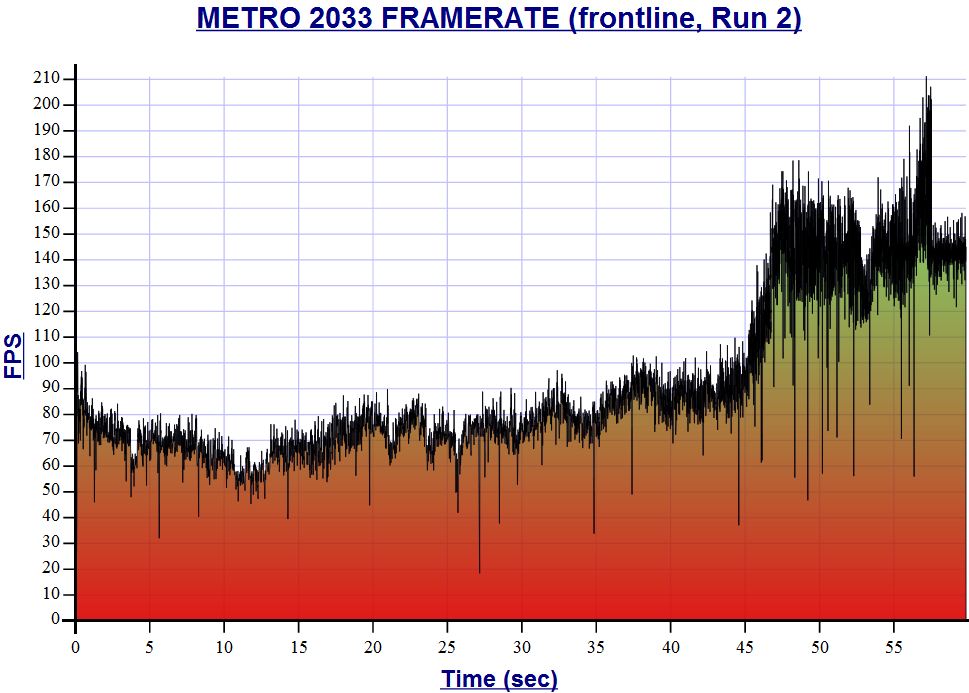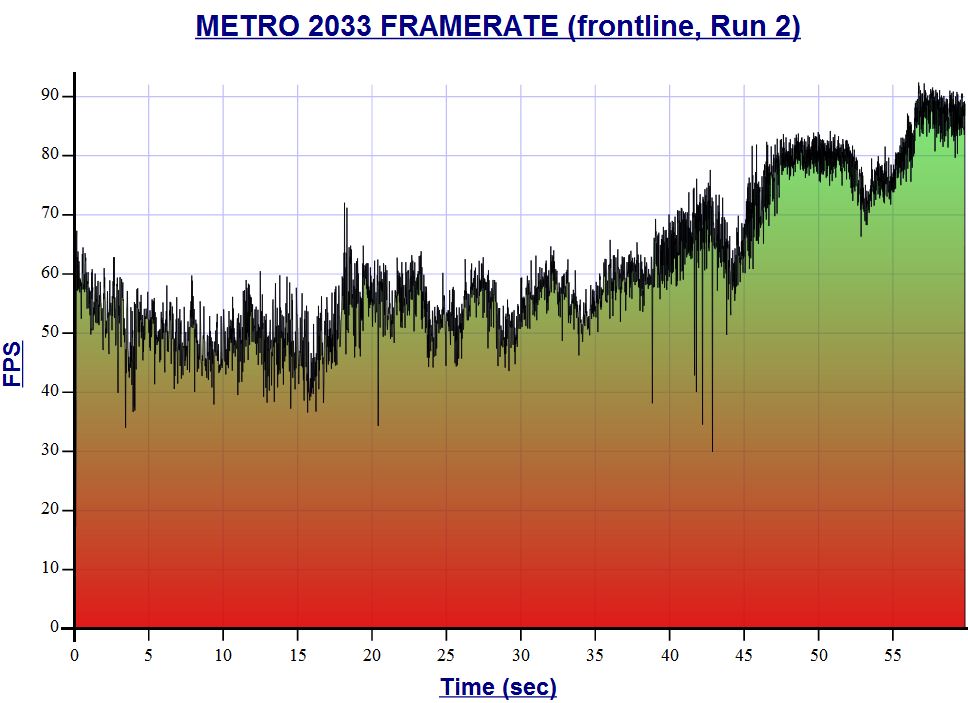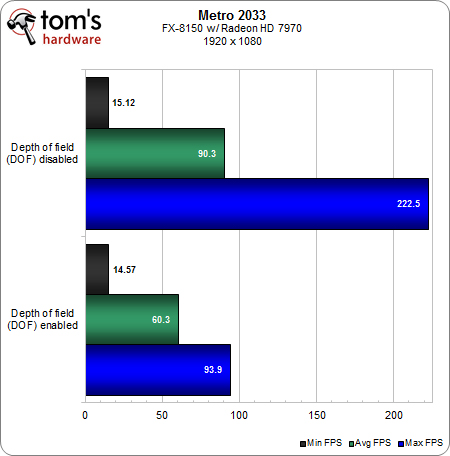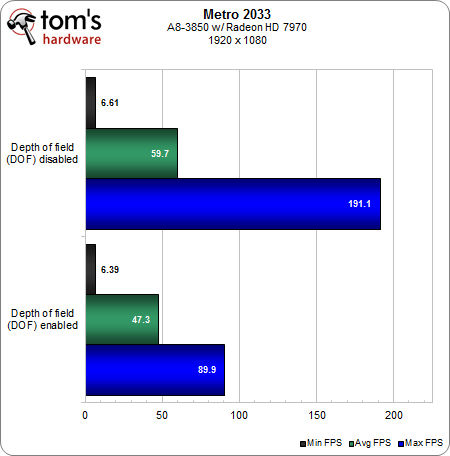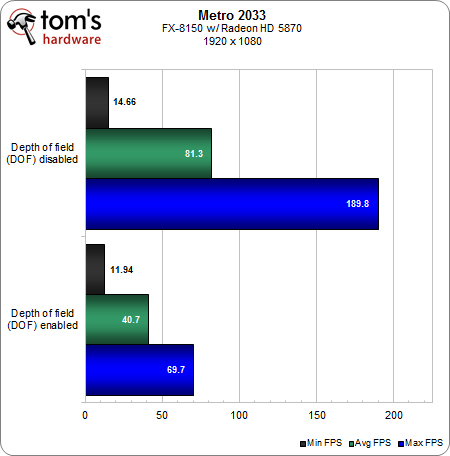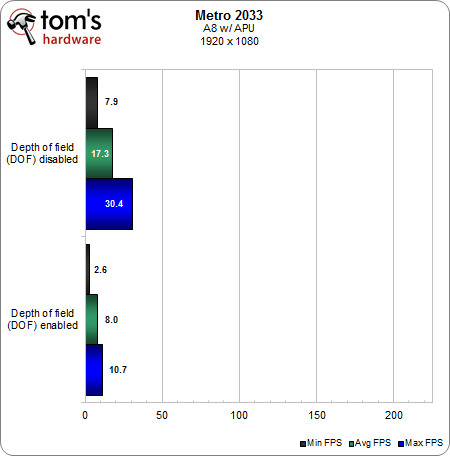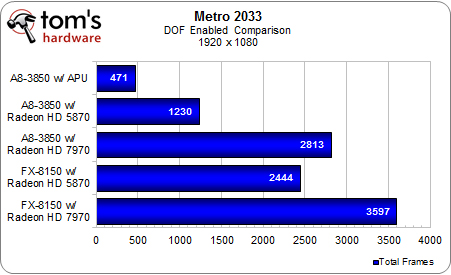What Does DirectCompute Really Mean For Gamers?
We've been bugging AMD for years now, literally, to show us what GPU-accelerated software can do. Finally, the company is ready to put us in touch with ISVs in nine different segments to demonstrate how its hardware can benefit optimized applications.
Benchmark Results: Metro 2033
Thanks to the outstanding benchmarking module within Metro 2033, we can give you a little more insight on how games run and why frame rates can be frustrating. Here is a look at our FX-8150 with a Radeon HD 7970 running through the Frontline benchmark, both with depth of field disabled (top) and turned on.
Quite the difference, right? Metro 2033 is obviously utilizing DirectCompute in ways that take a toll on performance unlike any other game we've tested. The first two-thirds of our test fall in the roughly 60 to 80 FPS range without the filter applied, but drop between 50 and 60 FPS with it active. In the last third of the test, the difference is even more pronounced.
Though it's hard to know why this difference exists, specifically, without 4A Games' insight, the number of lower frame rate drops is strangely less when we turn depth of field on. The result is a contrast between speed and consistency.
In our top-end config, we see a 50% hit to average frame rates with depth of field turned on, which is honestly the sort of result we expected more of heading into this review. Simply, enabling a feature intended to improve the realism of a scene through more work naturally affects performance. In the case of Metro 2033, our experience has always been that togging DOF is just more debilitating than other settings.
Interestingly, though, the delta imposed by DOF shrinks to 26% when we step down to the A8 processor with the same discrete graphics. In that same move, we see the results with depth of field disabled drop more than when the feature is used. Our hypothesis would be that the Radeon HD 7970's performance is already being artificially hamstrung by the A8 APU, so turning DOF on doesn't have the same marked impact.
Wanting to investigate this further, we brought in our Radeon HD 5870 for comparison.
We again see that 50% drop-off in average frame rates under the FX-8150 processor. But switching to the A8-3850? Holy cow! The good news is that using DOF has less impact on frame rates. The bad news is that our average performance numbers drop to the 20 FPS range using both settings. Once more, score a point for the balanced system, although we’re not sure if the word “balance” applies in a case where a 2.9 GHz quad-core CPU backed by a two-year old graphics card can’t sustain playable frame rates. An “aggressive” system might be more appropriate.
Get Tom's Hardware's best news and in-depth reviews, straight to your inbox.
We fixed the x-axis scale in this case to better illustrate how far the integrated graphics engine is from yielding playable performance under this load. Still, we see DirectCompute-based DOF cutting even these limited average frame rates in half.
What more can we add that this last graph doesn’t illustrate in spades? A powerful discrete GPU is very influential on performance, and AMD's current APUs currently struggle in the titles and at the settings many gamers want to use. We have our hopes higher for Trinity-based APUs, which we've already seen in action.
Current page: Benchmark Results: Metro 2033
Prev Page Benchmark Results: DiRT 3 Next Page Benchmark Results: Civilization 5